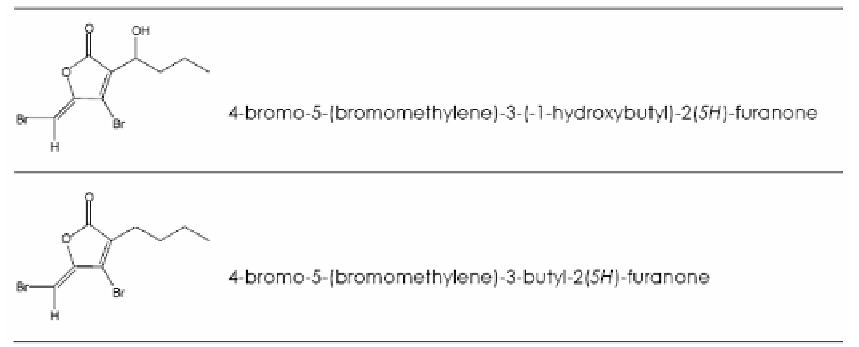Agriculture Reference
In-Depth Information
Figure 5. Quorum sensing antagonistic furanones produced by red algae (
Delisea pulchra
).
7. Other Implications of the QS Mechanism
As it has been already stated along the Chapter, QS mechanisms play significant roles in
microorganisms that live in symbiotic or pathogenic association with eukaryotic organisms.
These facts highlight the potential implications of QS communication in the ecological
interactions within microbial communities and the establishment of host-bacterial
relationships. The advances in the knowledge and understanding of the bacterial QS
mechanisms have also pointed out to the possibility of interfering with such communication
systems to develop new approaches for the control of infectious diseases and the
manipulation of biofilm formation [Zhang and Dong, 2004].
7.1. Cross Talking
QS signals generated by a particular microorganism often interfere effectively with the
QS mechanisms of different organisms. This is partly due to the high structural similarities
shared by the QS molecules of a same family (ie. AHLs). The QS-mediated interspecies
communication is called cross-talking, and its foreseeable ecological significance has brought
about new approaches to research in microbiology. In natural habitats, the ability of certain
species of bacteria to alter or disrupt the communication of other organisms possibly confers a
competitive advantage for the colonization of niches and uptake of available nutrients [Zhang
and Dong, 2004]. Cross-talking has implications in many areas of microbiology, as bacteria in
nature are regularly part of complex communities composed of a wide biodiversity of
microorganisms.
7.2. QS Involvement in Biofilm Formation and Infectious Diseases
A common mechanism by which bacteria function as a multi-species community is to
form a biofilm, defined as a community of bacterial cells that is adhered to a surface (biotic or
abiotic) or air-liquid interface, encapsulated in a self-produced extracellular polymeric matrix
[Costerton
et al.
, 1995]. Biofilms are architecturally complex structures with distinctive
morphology and physiology, compared to planktonic cells. Biofilm bacteria predominate,
numerically and metabolically, in virtually all nutrient-sufficient ecosystems. Bacteria in

